by Romain D’inca (Pigs Product Manager EMEA)
In a context of long history of use of fatty acids against pathogenic bacteria in animals and Humans, Aromabiotic®, the original MCFA, has proven its efficacy in pig production by improving the performances of animals at all stages of development. Recent demonstration of the capacities of MCFAs to mitigate the spread of some enveloped viruses may open new applications for the future of these fatty acids.
Antibacterial properties of Medium Chain Fatty Acids are historically proven
The first description of the antibacterial action of fatty acids was reported by Robert Koch in 1881, testing different soap combinations against the Bacillus strain causing Anthrax. However, the success of antibiotics decreased the interest for these molecules until 1970. Since then, deciphering of the mode of action of fatty acids, especially the Medium Chain Fatty Acids (MCFAs) took place and a growing number of human and animal pathogens has been proven to be sensitive to MCFAs (Baltić et al. 2017; Yoon et al. 2018). Since the years 2000, the trend to reduce the use of antibiotics to avoid spreading of resistance has renewed the interest for this natural and trustable alternative to antibiotics to control pathogenic bacteria in a more sustainable way.
Extensive literature is available on the antibacterial action of the MCFAs of different carbon (C) lengths, so called Caproic (C6), Caprylic (C8), Capric (C10) and Lauric (C12) acids. It is accepted that C6 and C8 have greater activity against Gram- bacteria like E. coli or Salmonella, whereas C10 and C12 have greater activities against Gram+ bacteria like Streptococcus or Clostridium. The different MCFAs share a 3-fold antibacterial activity that act in complementarity:
- Pore-forming capacity in the cells of bacteria because of similar hydrophilic/lipophilic balance with the lipid membranes, causing the leakage of the cytoplasm
- Acidifying the inner cell content of the bacteria by releasing protons
- Neutralizing DNA replication because of the absence of nucleus in bacteria
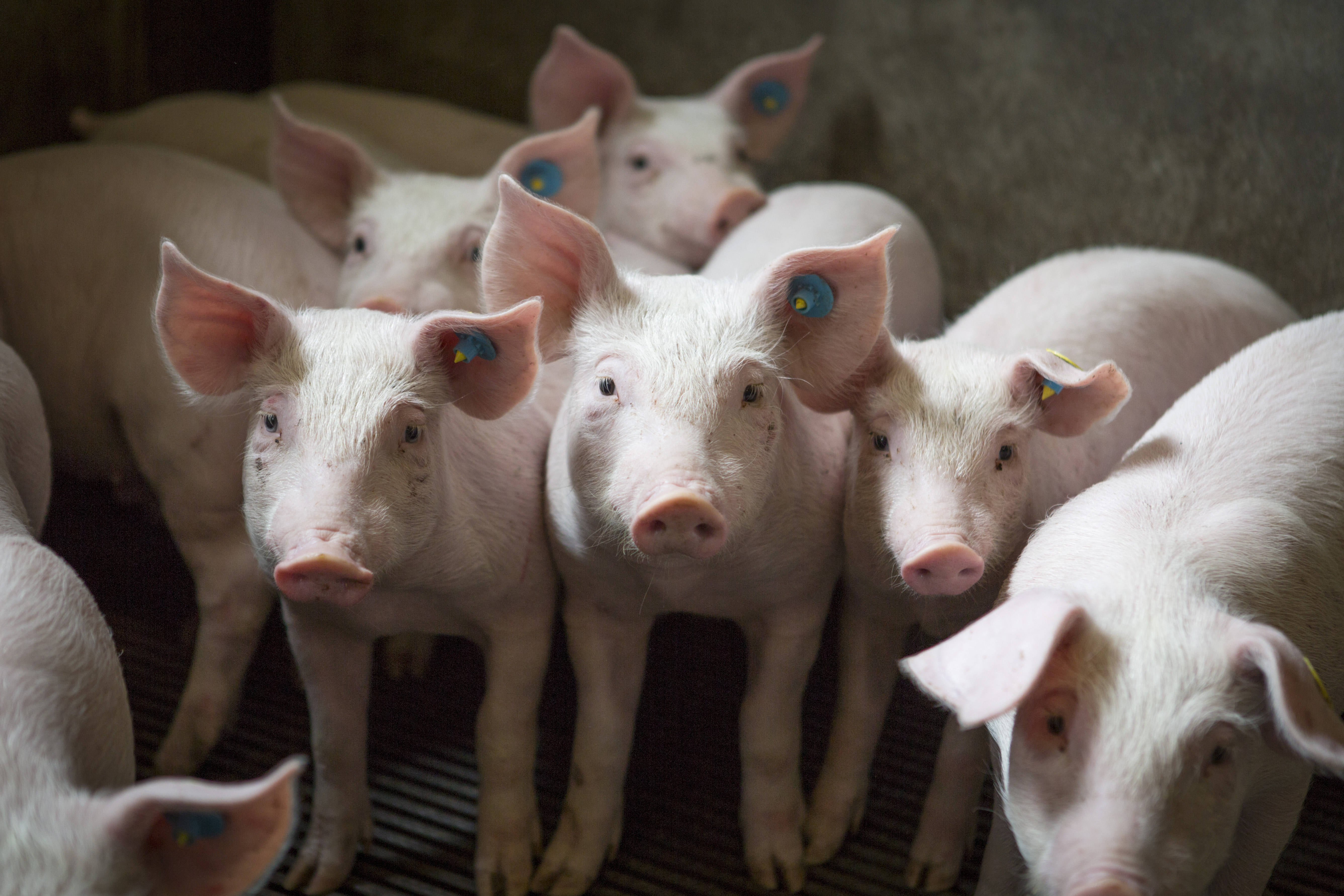
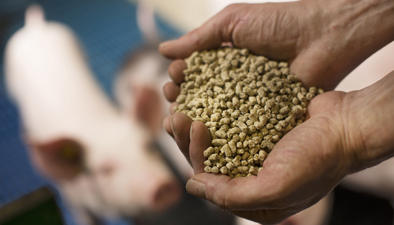
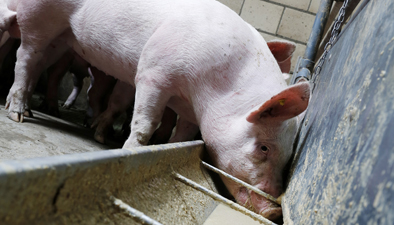
Aromabiotic® , 20-years’history with MCFAs
We conducted several practical trials worldwide focusing on the impact of MCFAs in pig production. A significant part of these trials focused on Aromabiotic® containing a balanced ratio of the different medium-chain fatty acids from C6 to C12. We proved that the combined efficacy of C6, C8, C10 and C12 is greater than the use of single compounds, especially in practical pig rearing conditions where a wide range of Gram+ and Gram– pathogens can impair the performances of animals. The use of Aromabiotic® at different stages of pig production significantly improves animal performances, as summarized in table 1, improving the economical balance of the farms.
What can be expected from MCFA in a world of upcoming viral threats like ASF, PED and PRRS?
In the recent years, outbreaks of several viruses have challenged the swine industry worldwide. In 2015 the spread of PED shocked the industry, now 4 years later ASF is changing the global pig production landscape. Handling this kind of threats needs a very broad approach including biosecurity measurements, veterinary precautions, nutritional adaptations and feed safety measurements to stop the disease from spreading.
Spreading of viral particles via the feed is an example of growing concern in the U.S. for as well PEDv as ASF (Nierderwerder et al., 2019). Research conducted at Kansas State University (Cochrane et al. 2015) studied the possibility to mitigate the spreading of PEDv in pig feeds using MCFAs. Reduction of the detection of PEDv in feed was achieved faster and with a higher efficacy (+18%) with MCFAs than with, among other products, formaldehyde.
Similarly, a collaborative dose-response study of Agrimprove and Ghent University confirmed the potential of Aromabiotic® to avoid invasion of Porcine Alveolar Macrophages by PRRSv in vitro (Figure 1). The current hypothesis for the direct antiviral activity of MCFAs towards enveloped viruses is that MCFAs have a destabilizing effect on the virulent envelope of these viruses. This exciting hypothesis, that still requires validation, would open a new field of application for MCFAs in the future since many of the upcoming pathogens like African Swine Fever, Classical Swine Fever, PRRS and PED are enveloped viruses and can spread via feed.
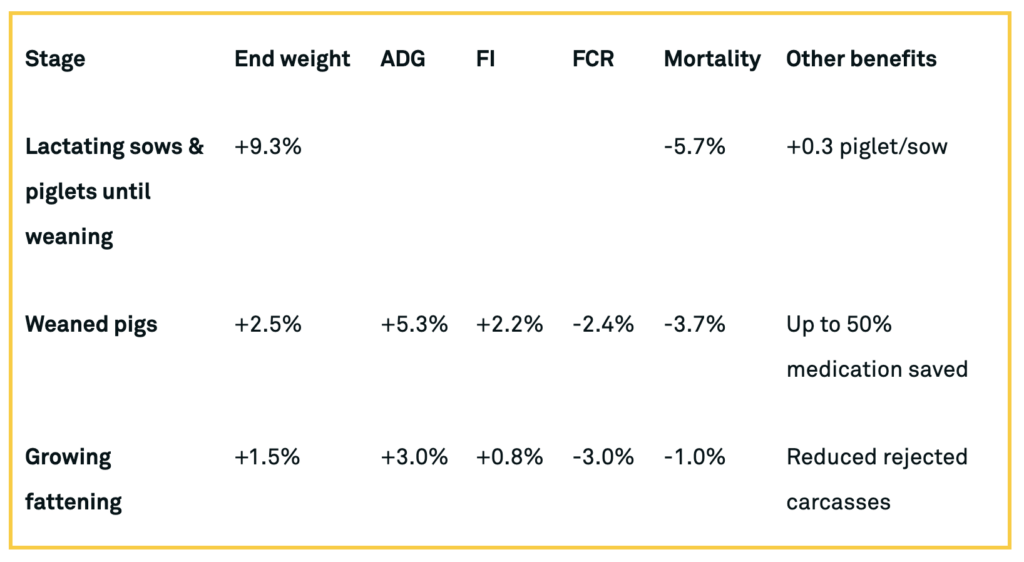
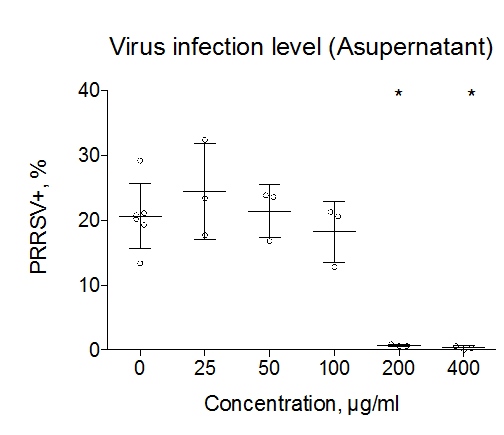
Porcine alveolar macrophages (PAMs) from the lungs of PRRSV-negative pigs were pre-treated in vitro with growing concentrations of Medium Chain Fatty Acids before being exposed to PRRSv. After 24h of incubation, the percentage of cells positive for PRRSv invasion were determined by classical immunofluorescence techniques (* indicate a significant difference at p<0.05).
